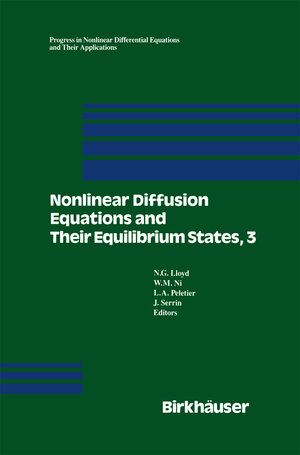
×
![Buchcover ISBN 9780817635312]()
„The book is worth reading for research workers in meteorology and geophysics, willing to deal with powerful tools of applied mathematics.“
--MAP
Nonlinear Diffusion Equations and Their Equilibrium States, 3
Proceedings from a Conference held August 20–29, 1989 in Gregynog, Wales
herausgegeben von N.G Lloyd, M.G. Ni, L.A. Peletier und J. SerrinNonlinear diffusion equations have held a prominent place in the theory of partial differential equations, both for the challenging and deep math ematical questions posed by such equations and the important role they play in many areas of science and technology. Examples of current inter est are biological and chemical pattern formation, semiconductor design, environmental problems such as solute transport in groundwater flow, phase transitions and combustion theory. Central to the theory is the equation Ut = ~cp(U) + f(u). Here ~ denotes the n-dimensional Laplacian, cp and f are given functions and the solution is defined on some domain n x [0, T] in space-time. FUn damental questions concern the existence, uniqueness and regularity of so lutions, the existence of interfaces or free boundaries, the question as to whether or not the solution can be continued for all time, the asymptotic behavior, both in time and space, and the development of singularities, for instance when the solution ceases to exist after finite time, either through extinction or through blow up.



